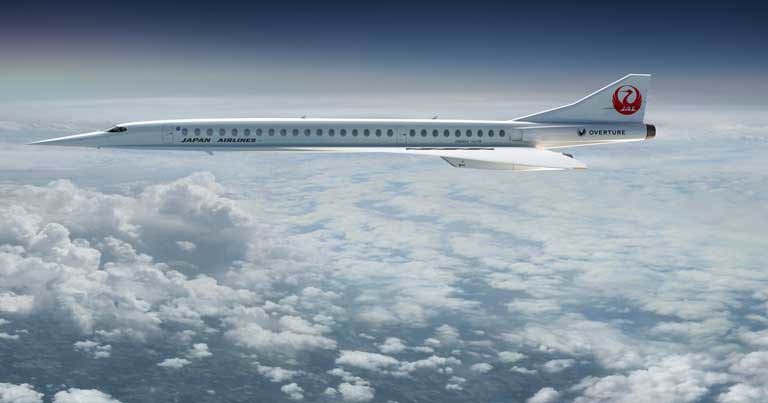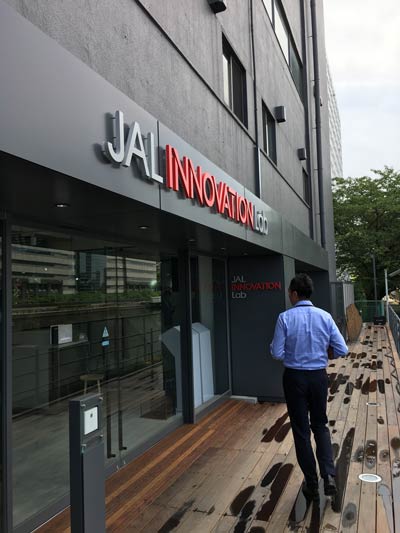Japan Airlines (JAL) has been busy looking to the future. In December 2017 it announced a strategic partnership with Boom Supersonic, before revealing in May this year that it has created the JAL Innovation Lab. In the same month, Japan’s national carrier also announced its intention to launch a new low-cost carrier ahead of the Tokyo Olympic Games in 2020. We discussed these subjects and the carrier’s vision for the future passenger experience with Akira Mitsumasu, Vice President, Products & Services Planning Division, Japan Airlines, who will be speaking at Future Travel Experience Global 2018, taking place in Las Vegas between 10-12 September.

JAL has invested $10 million in the Boom project and has the option to purchase up to 20 of the future supersonic aircraft. It plans to offer its know-how in the design phase. “As a premium full-service carrier, with extensive worldwide operations, we have ample experience when it comes to onboard passenger experience, which we hope will contribute to the design process,” explains Mitsumasu. “Today, with smart computers, computational fluid dynamics, carbon fibre composite material and modern engine technology, it is possible – unlike the days of the highly uneconomic Concorde – to produce a supersonic aircraft that is economic, by combining existing certified technology in service and speed.
“In terms of passenger experience, the biggest differentiator the Boom Supersonic aircraft will offer is speed and hence time,” continues Mitsumasu. “Tokyo to San Francisco would be just 5.5 hours instead of 11.5 hours, enabling day trips across the Pacific. Tokyo to Hong Kong could be done in two hours, enabling a shuttle service. Our new supersonic aircraft will fly at 60,000 feet, the same as Concorde, where through our large windows, you can actually see the curvature of the Earth. The sky is a deeper blue, and the air is much thinner and therefore there is much less turbulence. With regards to inflight entertainment and connectivity, we will look into using the latest technologies available to ensure an enjoyable personalised onboard experience.”
The science of innovation and low-cost ambitions

While it waits to send its customers faster than the speed of sound, JAL plans to quicken the pace of development in other areas of the passenger experience, having established the JAL Innovation Lab earlier this year. “We want to utilise the many ideas generated from our customers and employees to create new ways of solving problems and to design alternative ways of better serving our customers,” says Mitsumasu. “Through partnerships with companies and startups, we are beginning to create prototypes using artificial intelligence, the Internet of Things and 3D printing technologies. Connectivity will increase the number of things that can be done onboard the aircraft, hence it will also be possible for airlines to propose and deliver new value offerings, or perhaps even quite dramatically change the onboard experience. Imagine for example, if you could see from your aircraft window sceneries of all the streets and cities the aircraft is flying past, quite like that of riding on a train or a car, wouldn’t that be wonderful?”
Technological advances aren’t the only strategic focus for JAL’s future onboard product, with a new airline subsidiary also in the planning ahead of the upcoming Tokyo Olympics. “In addition to JAL and our short-haul joint venture Jetstar Japan, we thought we also needed a medium-to-long haul LCC in our portfolio to meet the diverse needs of our customers, whilst at the same time generating new travel demand,” explains Mitsumasu. “We also want to support Japan’s goal to receive over 60 million foreign visitors by 2030.”
“As a Japanese airline, we are working to ensure that throughout the period of the Olympics and Paralympics, we will accomplish our mission to provide safe and comfortable air transport,” continues Mitsumasu. “We also hope that travellers who come from abroad to Japan will, through their experience of our 5-Star inflight comfort and smart airport service, form a good impression of the country. We will be investing in many areas, from airport counter refurbishment to enhanced IT service improvements, as well as a barrier free mobility environment. Japan experienced a period of miraculous economic growth after the 1964 Games, and we hope that with the 2020 Games, we will work towards building a better future for all.”
Akira Mitsumasu, Vice President, Products & Services Planning Division, Japan Airlines, will speak in a session entitled “The future of travel, and guest experiences, according to those with disruptive visions” at Future Travel Experience Global 2018 (10-12 September, Las Vegas). He will be joined in this unique session by fellow innovators from Virgin Hyperloop One, BMW Group Designworks, Orion Span and Munich Airport’s LabCampus. Find out more here >>






